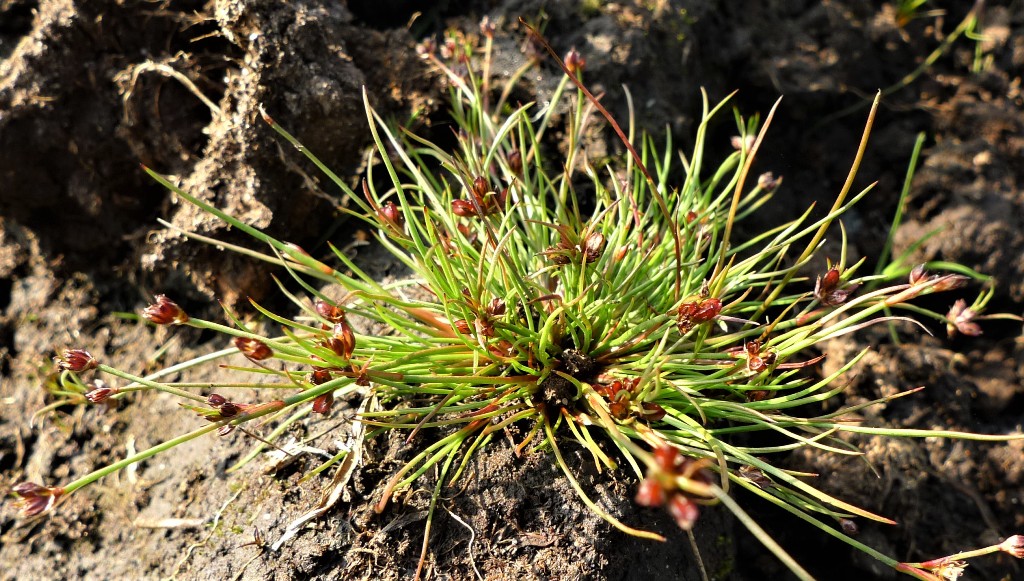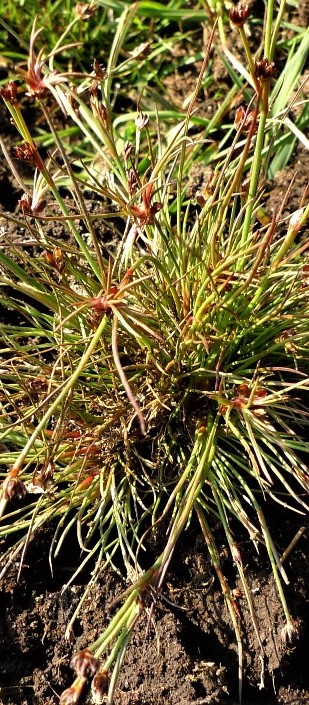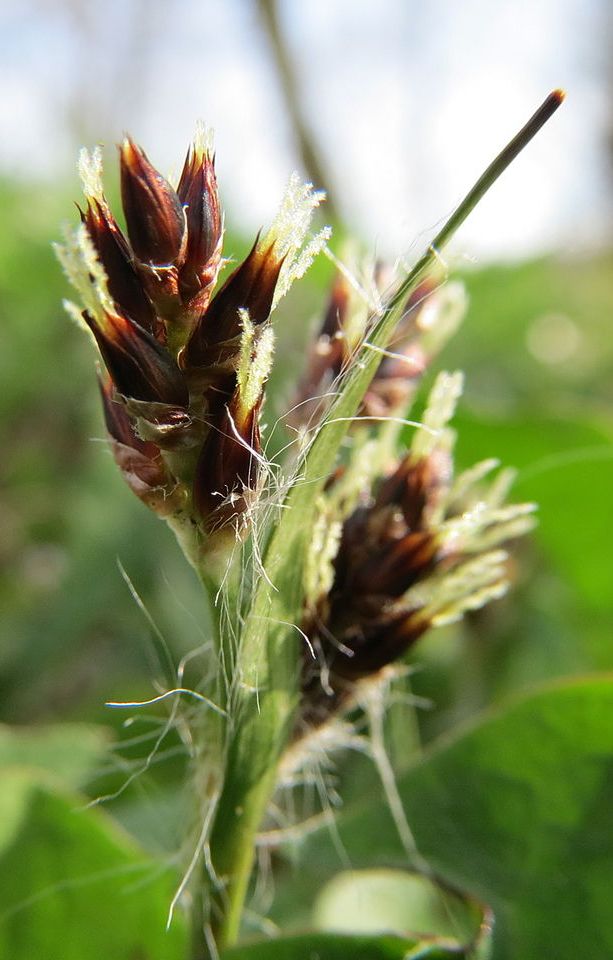In my previous post I’ve written all about the useful Sedge family or Cyperaceae. This is a much shorter post about the closely related Rush Family or the Juncaceae.
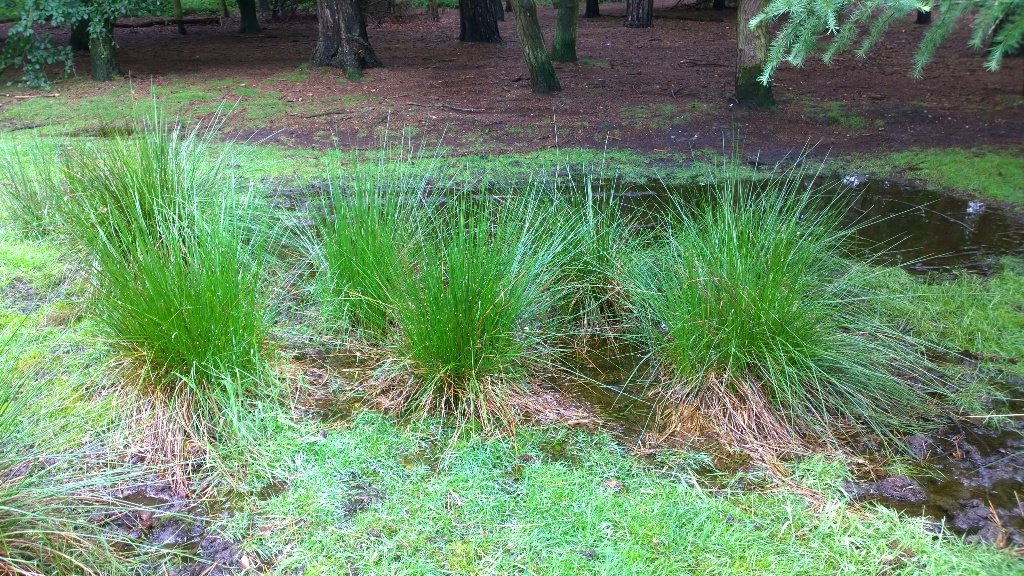
In particular the genus Juncus looks very similar to Scirpus and other bulrushes in the Sedge family.
Well; ‘all the proof is in the flower’ of course but you have to look close-up in order to see that as from a distance they will look similar!
Two beautiful illustrated websites are by Lizzie Harper and also see Wayne’s Word about Flower Terminology. A good flora is always helpful of course and you can find a recommended book list and links in my previous post on Cyperaceae. A website I often use, if you are regularly following my blog, is the Leicestershire and Rutland based Naturespot. This is a most useful, descriptive and active site showing many good photographs!
This family only has 2 genera: Juncus or Rushes and Luzula or Wood-rushes.
As I did in previous post I will just list the most common species in the B.I. on the next page. This can be found through the distribution maps in the back of Collins pocket guide in Grasses, Sedges, Rushes & Ferns of Britain and Northern Europe .
These maps are a useful feature as most plants used by us in one form or the other would be the common species anyway!
Rare species are not going to be used as food, medicine or building materials. Although saying this: they would have probably been collected and used as an ornamental plant by the Victorians, who loved unusual varieties such as can be found in the ferns for example.
But in the present day collecting of wild plants is a taboo! And of course which were common wild flowers then could now be very rare!
I will also be using my own Flora of Birmingham and the Black Country from now on for all my future posts as this is my local or area and why didn’t I think of this before?
I use colour coding for easy reading! Blue background is general interesting info (although I hope you find it all interesting!!). Green is about all the uses except for medicinal uses or if there is a warning in which case I use a pink background. Pictures with gratitude by Mike Poulton unless stated.
Please use Jump-links in the Contents in order to get easier to the plant description on next page!
Contents:
Juncus or Rush
Juncus subnodulosus or Blunt-flowered Rush
J. x surrejanus (J. articulatus x acutiflorus)
J. tenuis or Slender Rush)
J. inflexus or Hard Rush
J. effusus or Common Rush
J. conglomeratus or Compact Rush
J. bufonius or Toad Rush
J. bulbosus or Bulbous Rush
J. squarrosus or Heath Rush
J. acutiflorus or Sharp-flowered Rush
J. articulatus or Jointed Rush
Luzula or Wood-rushes
Luzula campestris or Field Wood-rush
L. multiflora or Heath Wood-rush
L. sylvatica or Great Wood Rush
L. pilosa or Hairy Wood Rush
L. forsteri or Southern Wood-rush
Luzula luzuloides or White Wood-rush and last:
Luzula nivea or Snow Rush
Juncus
the genus Juncus
with 30 species listed in Stace.
There are 11 species described in the Flora of Birmingham and the Black Country:
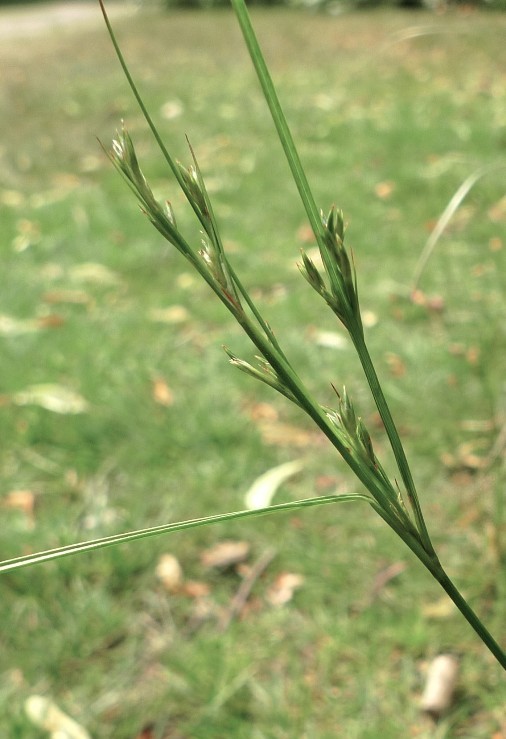
- J. tenuis or Slender Rush (a Neophyte)
The cultivar Blue Arrows is offered in U.S.A.
Juncus effusus
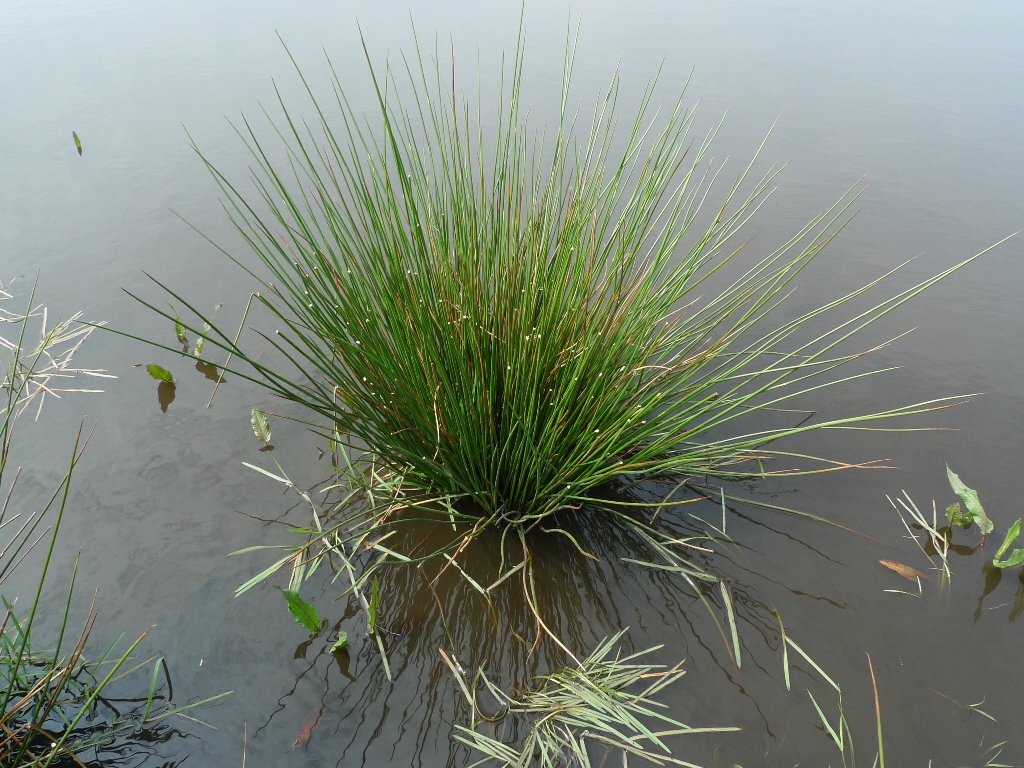
This grows very easily on poorly drained fields and can become a problem as its unpalatability to livestock.
Wildlife Uses:
The provides wildfowl, wader feeding, and nesting habitats, and also habitats for small mammals. The root stalks are eaten by muskrats, and birds take shelter amongst the plant’s stems. A number of invertebrates feed on soft rush, including the rufous minor moth and larvae of Coleophora caespitiella.
Ethnobotanical Uses:

In Europe, this rush was once used to make rush-lights (by soaking the pith in grease), a cheap alternative to candles.
It is one of the seven ingredients of Hui sup tea. In Japan, this rush is called igusa, and grown to be woven into the covering of tatami mats. In Iran and Afghanistan too it is used to weave light, cheap mats.
It is used in the treatment of sore throats, jaundice, oedema, acute urinary tract infection and morbid crying of babies!
Ornamental Uses:
The species is cultivated as an ornamental plant, for planting in water gardens, native plant and wildlife gardens, and for larger designed natural landscaping and habitat restoration projects.
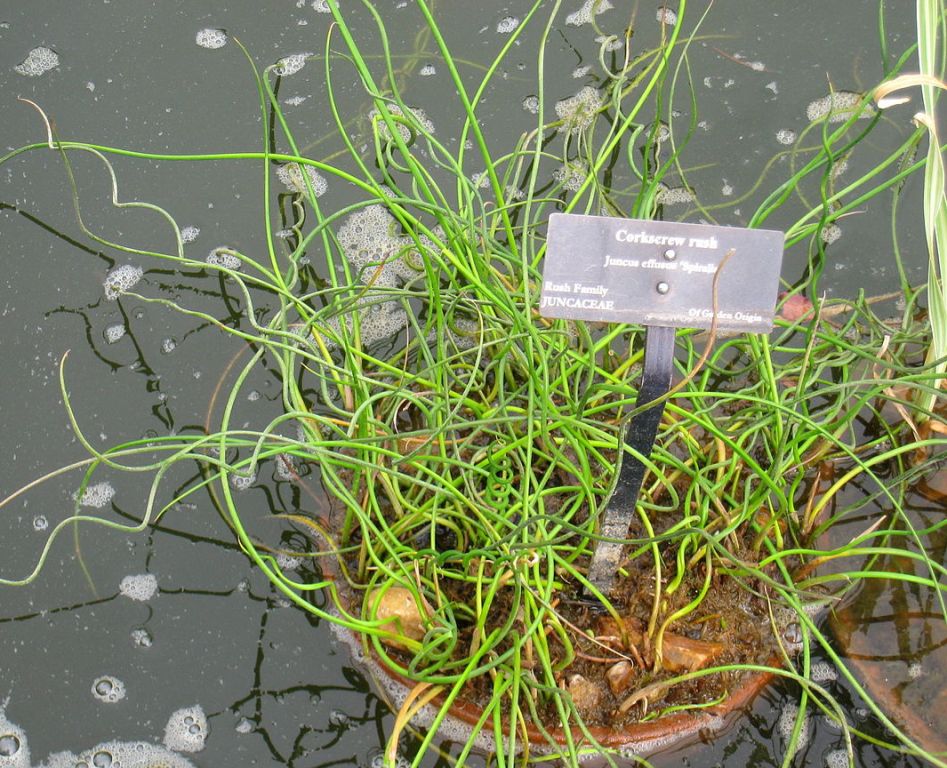
The cultivar Juncus effusus ‘Spiralis’ with the common names corkscrew rush or spiral rush, is a distinctive potted and water garden plant due to its very curled spiral like stems.
Juncus conglomeratus
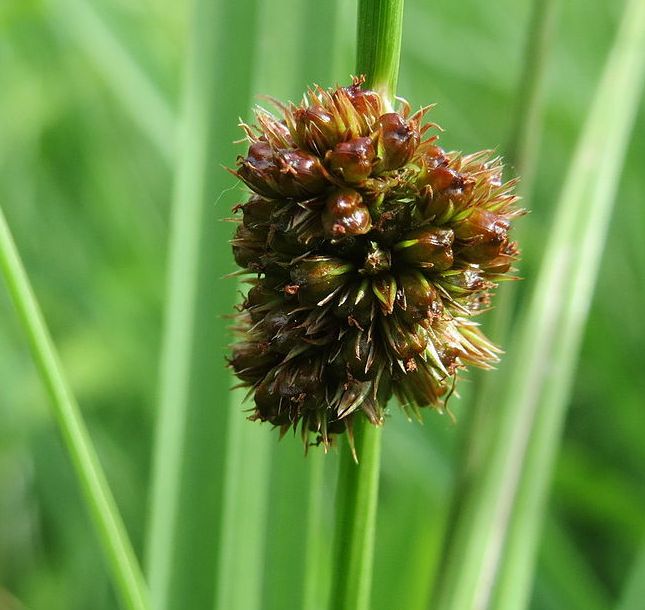
Uses:
Closely related to J. effusus. The stems are used in basket making, thatching, weaving mats.
Juncus bufonius
As the name suggests, the plant has notable sharp-looking flowers, flowering between July and September.
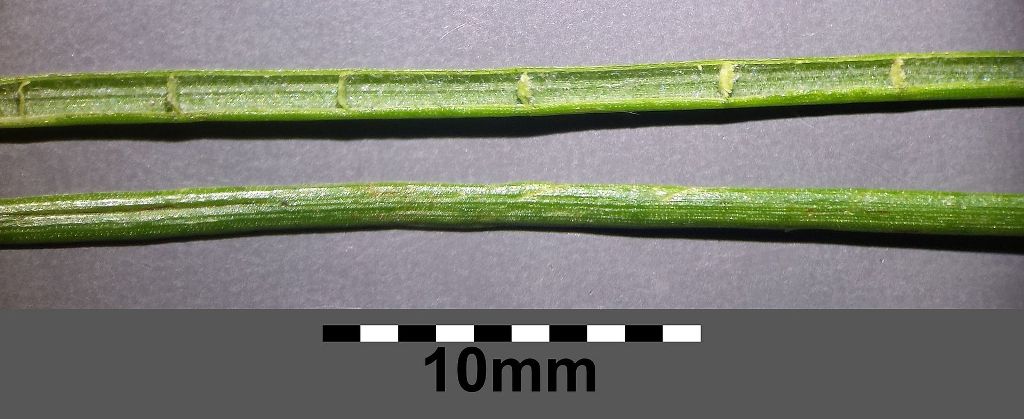
Transverse internal partitions or joints may be seen or felt in the leaf of the plant.
Luzula or Wood-rushes
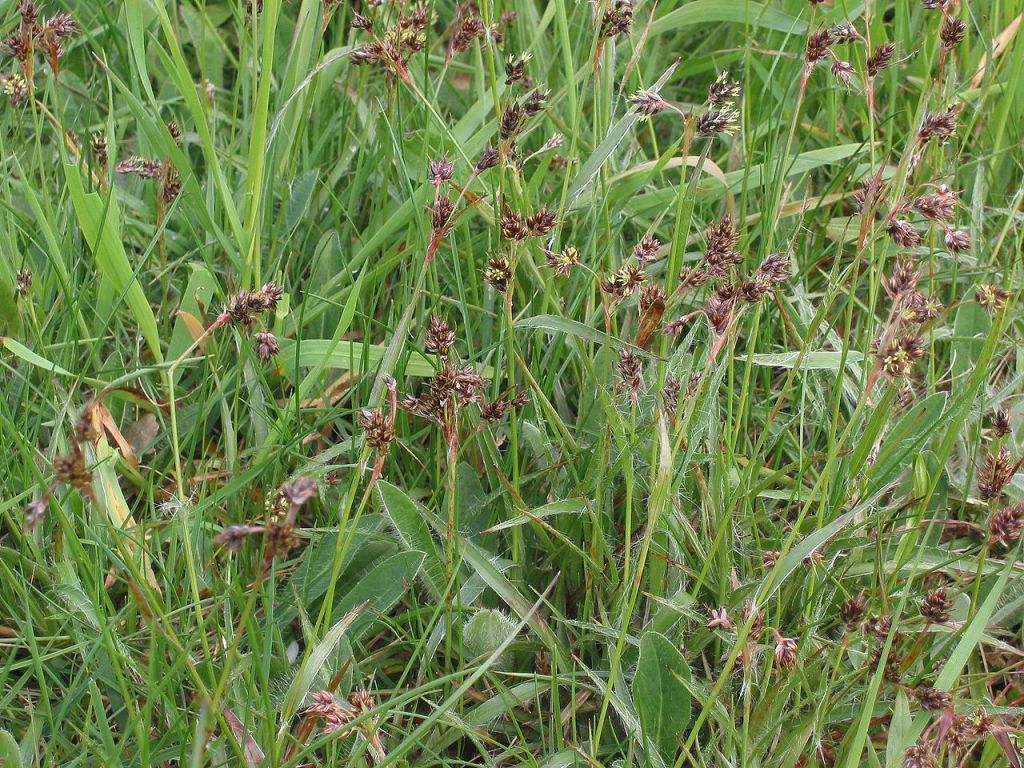
has 9 species only according to Stace.
There are 5 species described in the Flora of Birmingham and the Black Country:
The four most common ones are:
This species of Luzula is found on all types of native grasslands, and cultivated areas such as lawns, golf-course greens and fields.
L. multiflora
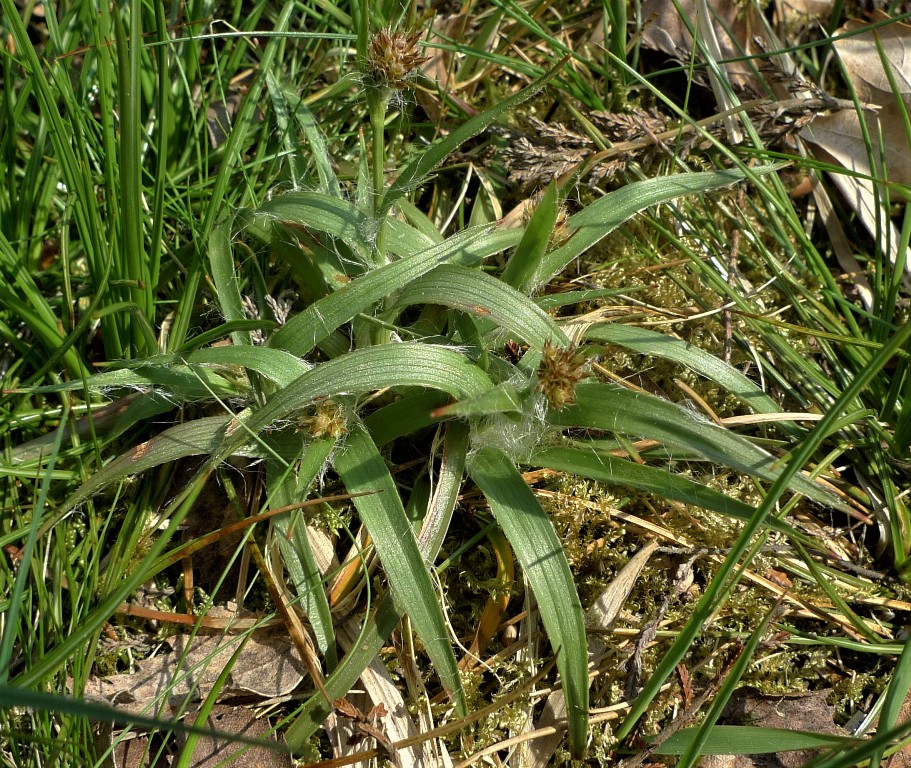
preferring more acidic soils and more shaded places than L. campestris.

Luzula sylvatica in natural setting (by Cwmhiraeth-Wikipedia)
Luzula sylvatica is commonly used in horticulture — its thick, patch-forming habit (which allows the plant to act as a weed suppressant),hardiness, as well as the ability to grow in shade and damp soils being particular boons; it is commonly used for ground cover and/or as an ornamental grass.
The cultivar ‘Marginata’ has gained the Royal Horticultural Society’s Award of Garden Merit.
The leaves of Luzula sylvatica are picked in winter by golden eagles to line their eyries. The flowers and seeds are also the sole food source for the larvae of the Coleophora sylvaticella moth
L. pilosa

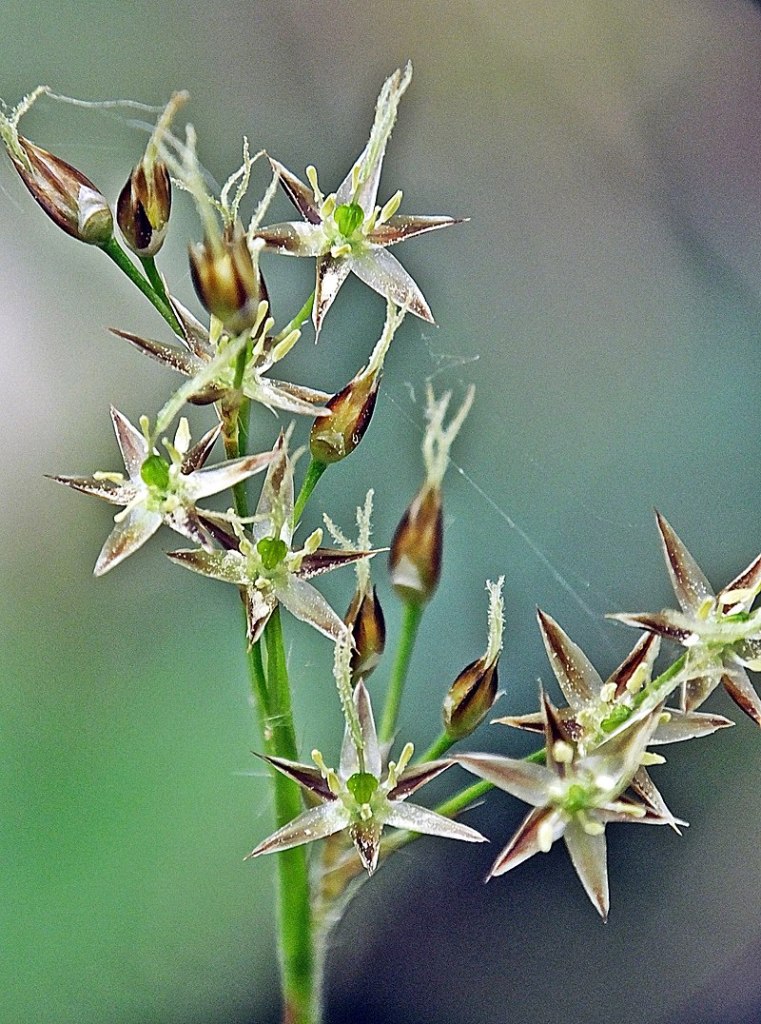
- L. forsteri or Southern Wood-rush was last recorded in 1993 in Birmingham and the Black Country, being at its most northerly growing range. It has not been spotted in recent surveys.
L. nivea

Luzula luzuloides or White Wood-rush and Luzula nivea or Snow Rush are cultivated as ornamentals. These can escape from gardens to become an invasive species.

